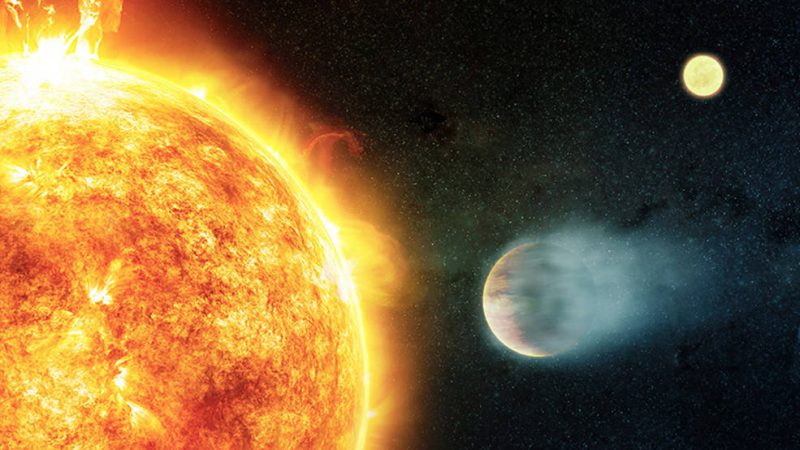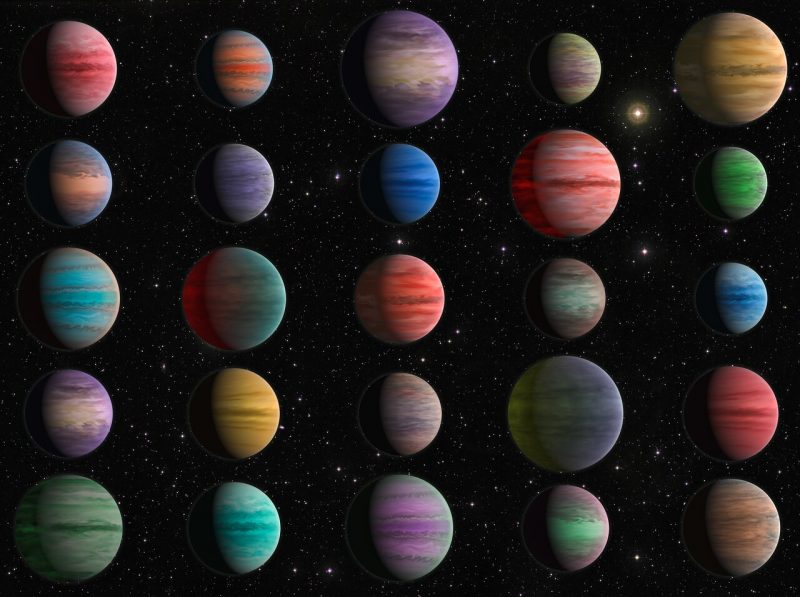
Hot Jupiters keep their stars young
While searching for and studying exoplanets, astronomers find a lot of hot Jupiters. These are big gaseous worlds, like giant planet Jupiter in our solar system. But they orbit as close or closer to their stars than Mercury orbits our sun. These big, close-in worlds seem to pull on their host stars, in a way that causes the stars to spin more quickly. And astronomers suspected the spin-up was causing some stars to become more active. The stars might be expected to produce more X-rays, for example. And X-rays are, typically, associated with young stars. On November 2, 2022, astronomers said their study of multiple hot Jupiters confirms this. Some hot Jupiters do make their stars appear younger than they really are.
The astronomers used NASA’s Chandra X-ray Observatory to conduct their study. They said in a statement that this is the first time the anti-aging property of hot Jupiters has been “systematically documented.” They said it provided:
… the strongest test yet of this exotic phenomenon.
A paper describing these results was published in the July 2022 issue of the Monthly Notices of the Royal Astronomical Society, and appears online.

What makes a star seem young?
As with humans, the astronomers said, there are many factors that can determine a star’s vitality. They explained:
All stars will slow their rotation and activity and undergo fewer outbursts as they age. Because it is challenging to precisely determine the ages of most stars, it has been difficult for astronomers to identify whether a star is unusually active because it is being affected by a close-in planet, making it act younger than it really is, or because it is actually young.
Astronomer Nikoleta Ilic of the Leibniz Institute for Astrophysics Potsdam (AIP) in Germany led the new study. She commented:
In medicine, you need a lot of patients enrolled in a study to know if the effects are real or some sort of outlier. The same can be true in astronomy, and this study gives us the confidence that these hot Jupiters are really making the stars they orbit act younger than they are.
Double-star systems and hot Jupiters
Ilic’s study looked at double-star (binary) systems, in which the stars were widely separated and in which only one star has a close-in hot Jupiter. The astronomers said:
[We] know that just like human twins, the stars in binary systems form at the same time. The separation between the stars is much too large for them to influence each other or for the hot Jupiter to affect the other star. This means they could use the planet-free star in the system as a control subject.
Co-author Katja Poppenhaeger, also of AIP, explained:
It’s almost like using twins in a study where one twin lives in a completely different neighborhood that affects their health. By comparing one star with a nearby planet to its twin without one, we can study the differences in behavior of the same-aged stars.
X-rays from aging stars?
The team said they analyzed the level X-ray emission from each star, to determine how “young” the star is acting. With this in mind, they looked for evidence of:
… planet-to-star influence by studying almost three dozen systems in X-rays (the final sample contained 10 systems observed by Chandra and six by ESA’s XMM-Newton, with several observed by both). They found that the stars with hot Jupiters tended to be brighter in X-rays and therefore more active than their companion stars without hot Jupiters.
Marzieh Hosseini, also of AIP, said:
In previous cases there were some very intriguing hints, but now we finally have statistical evidence that some planets are indeed influencing their stars and keeping them acting young.

Bottom line: A study of multiple hot Jupiters – using NASA’s Chandra X-ray Observatory – confirms that hot Jupiters do cause their stars to appear younger than they are.











